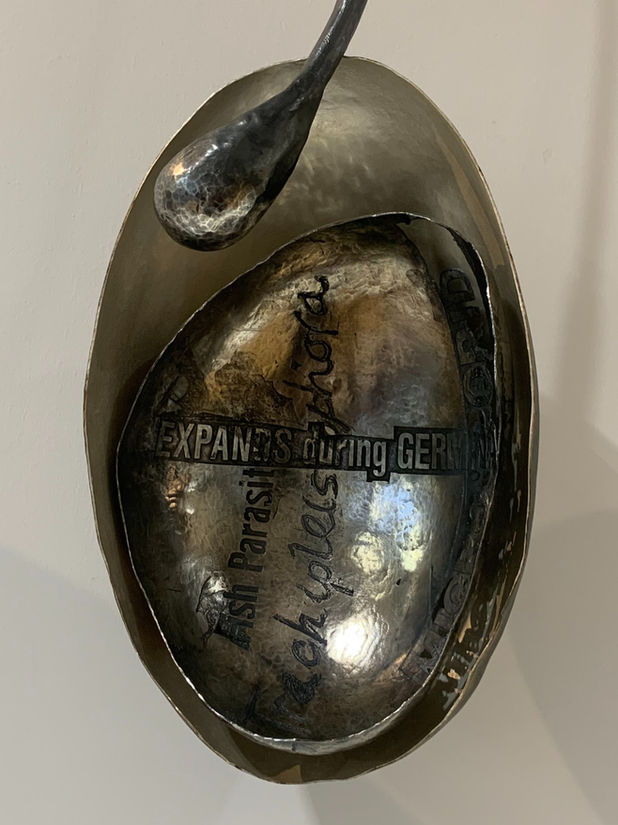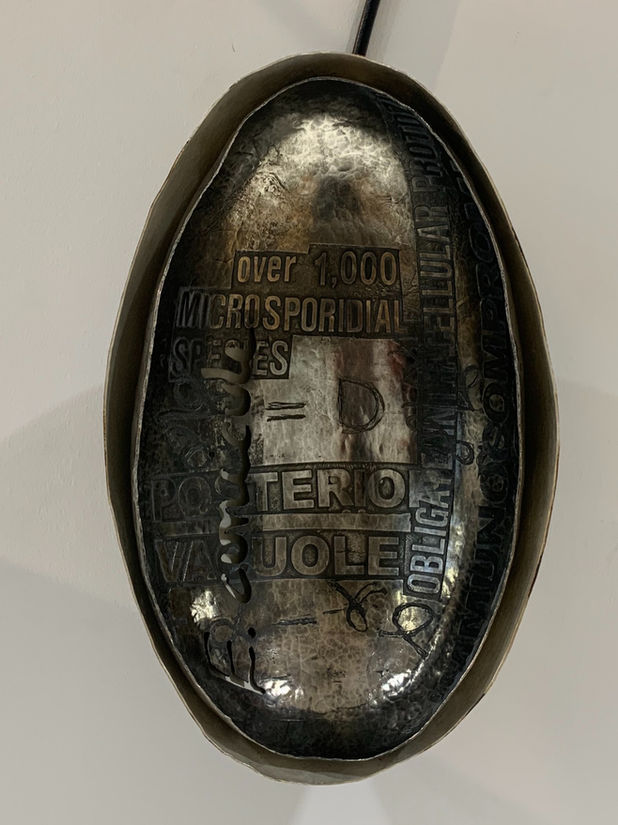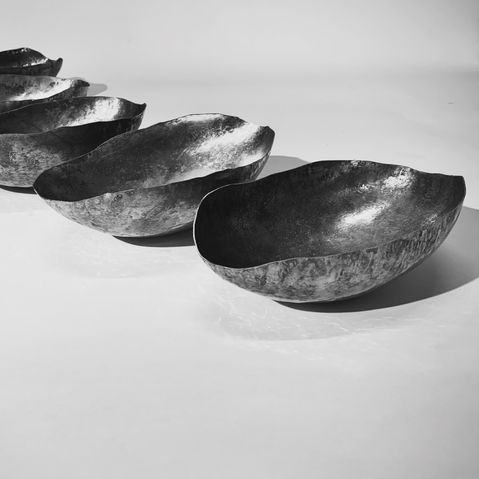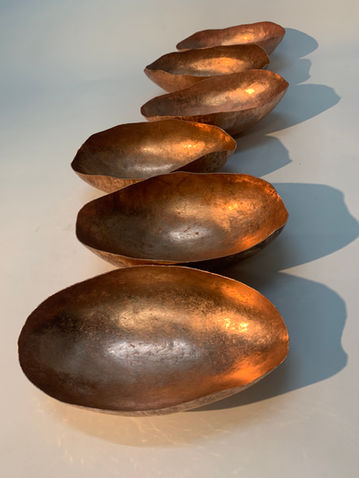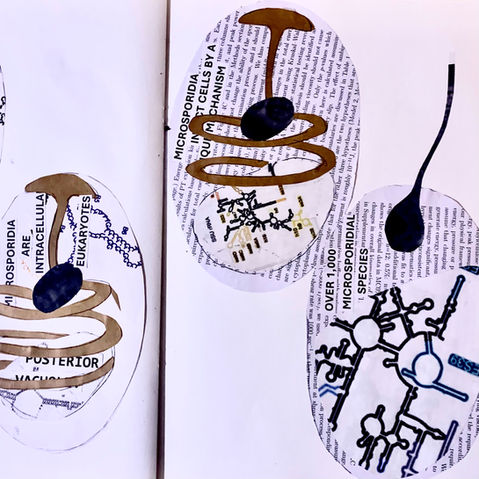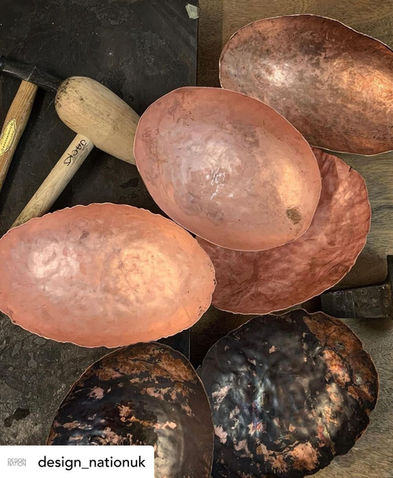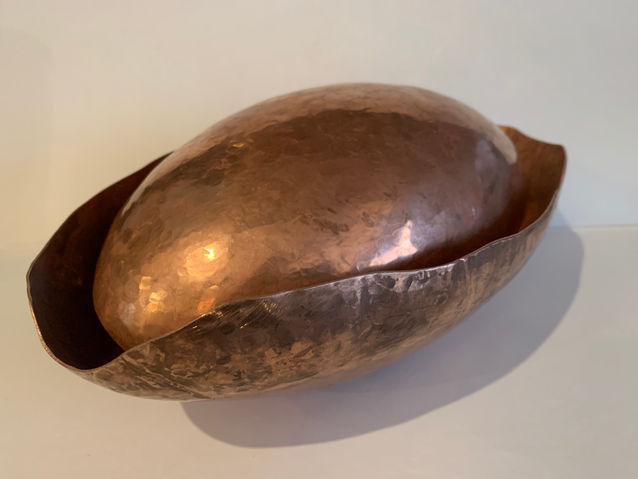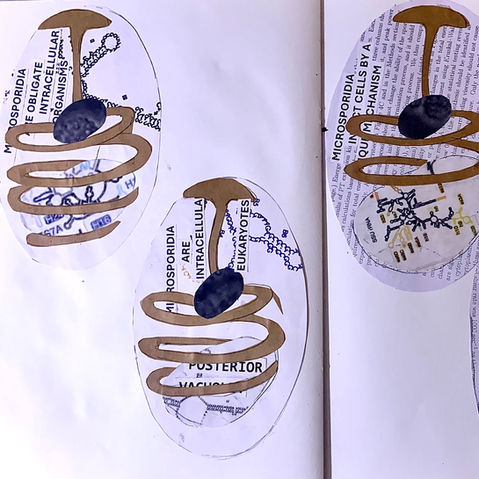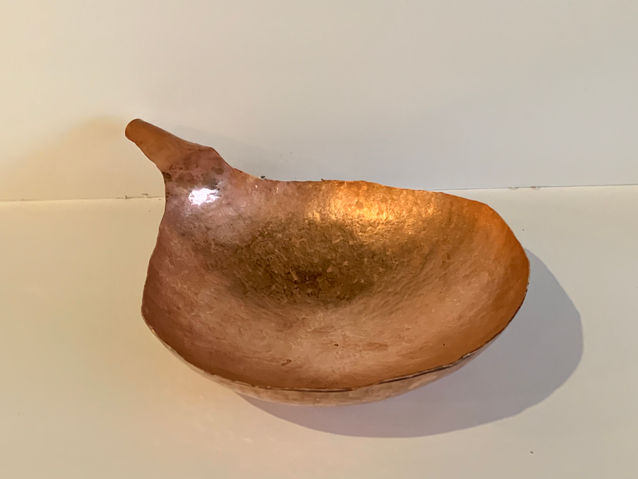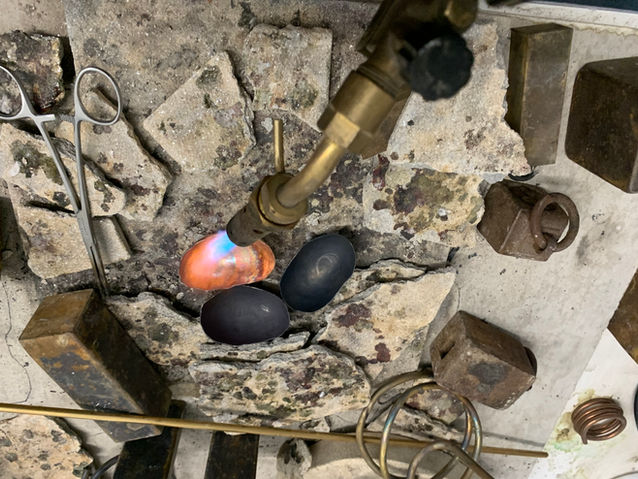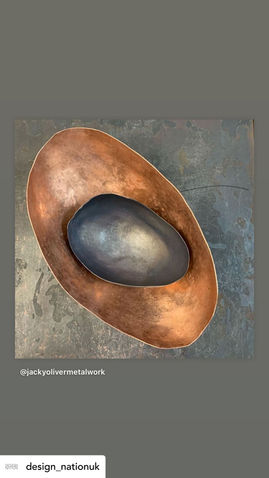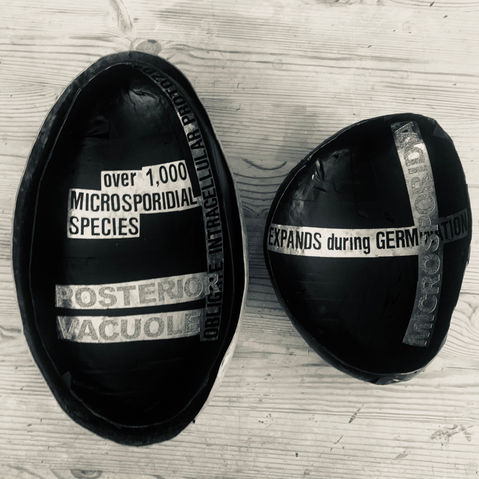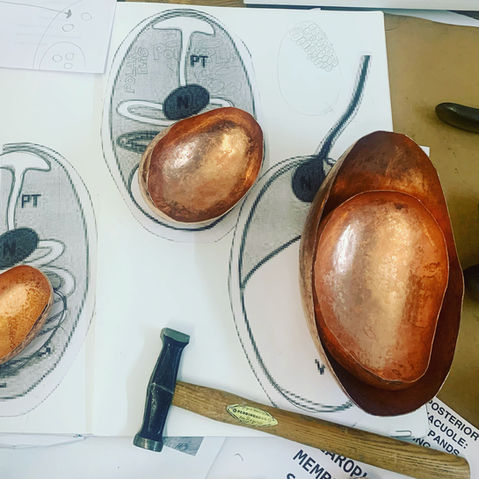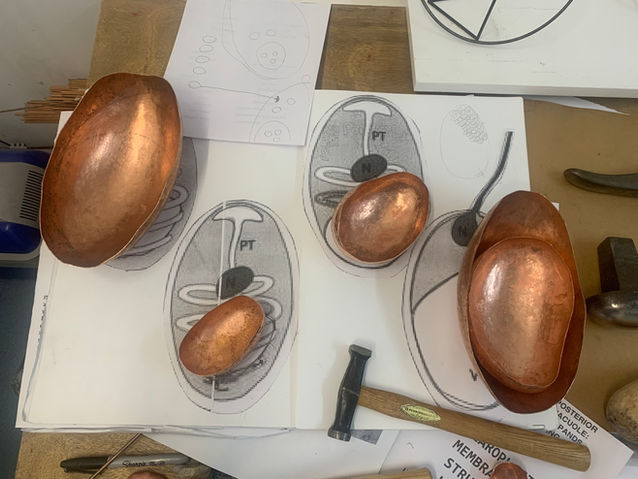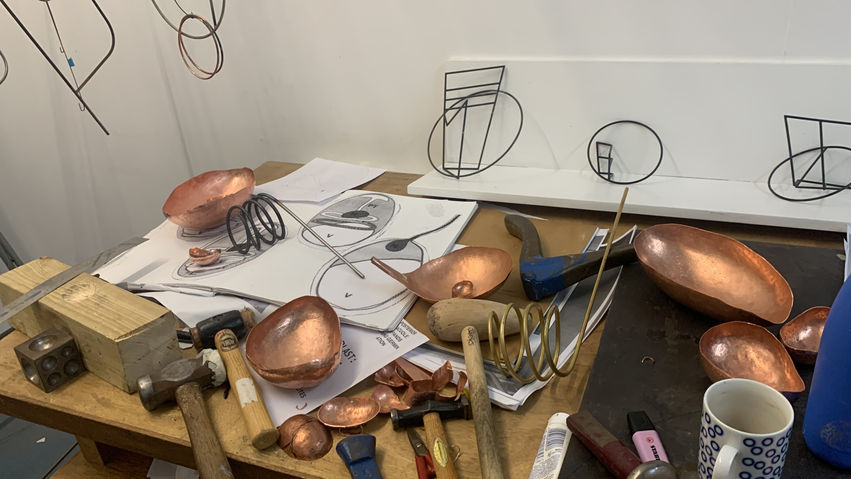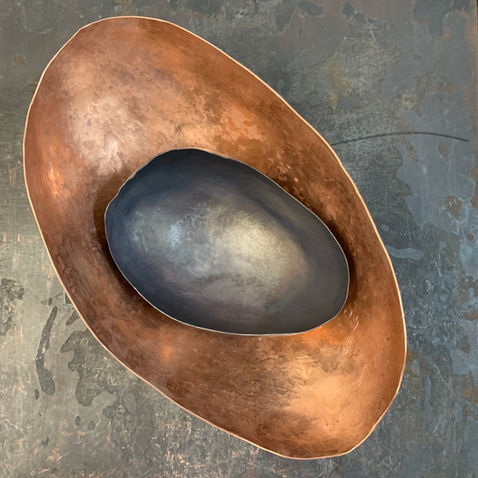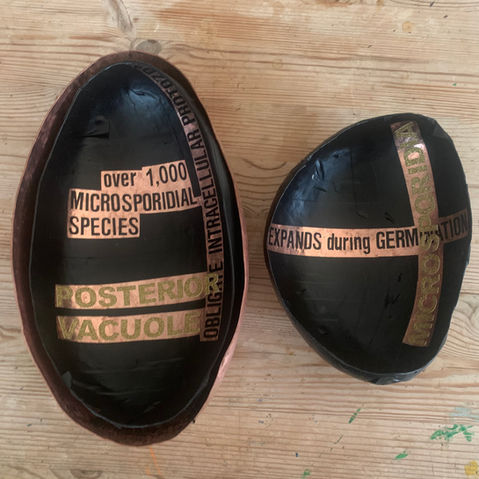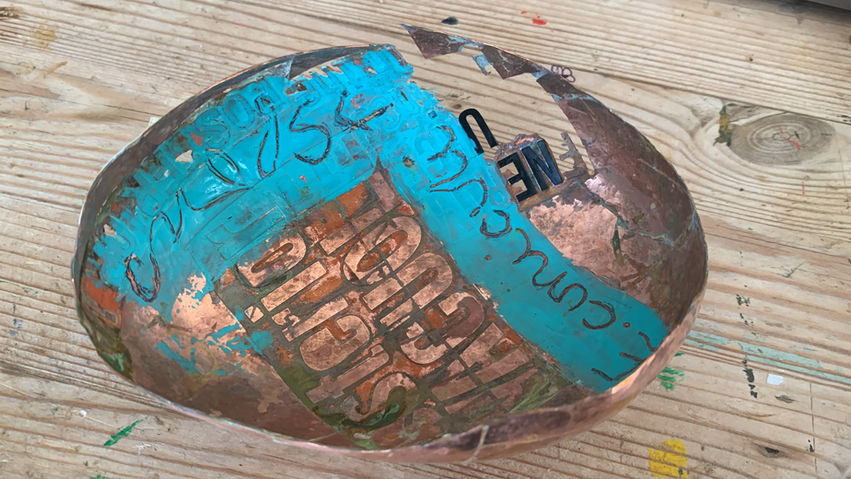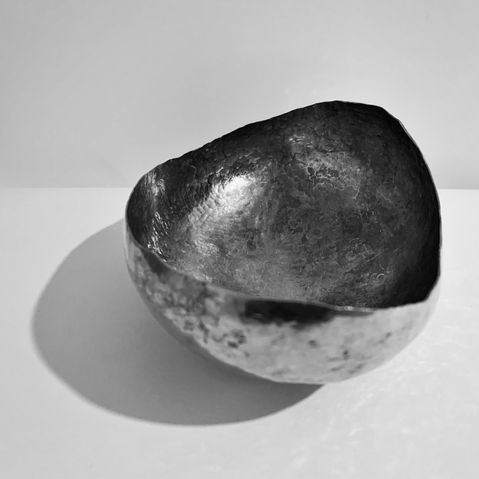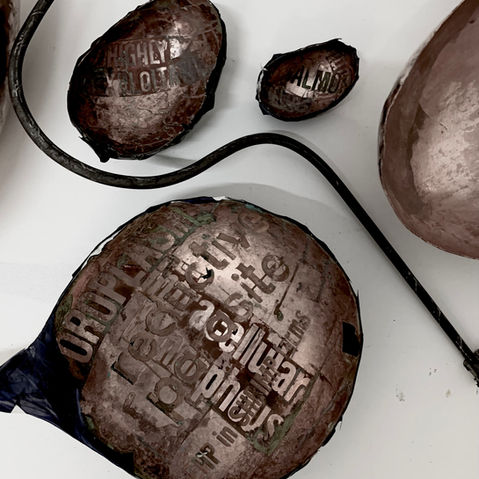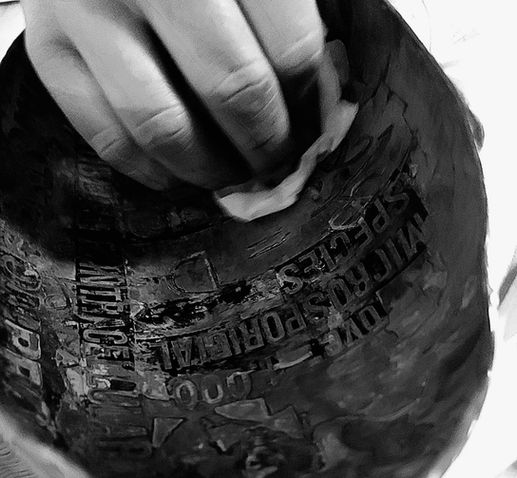Understanding Microsporidia Parasites commission for the University of Exeter
The ’Understanding Microsporidia’ project allowed Jacky to work with the team at the University of Exeter, (or should this be Dr Becky Conners and Dr Bryony Williams) who shared their knowledge generously, to give Jacky a comprehensive insight into the subject. The fascinating stages of development of the Microsporidia spores as they germinate, inspired this piece. A visit to the laboratory allowed Jacky to see the spores first hand, discussions about the effects this parasite on plants and animals, how the parasite works. These explanations were also supported by numerous diagrams which showed the striking visual development of the spore as well as lab notes have all informed the final outcome to create a multi-layered. In her workshop Jacky followed her own series of experiments, this time how to present aesthetically and technically different aspects of the story of microsporidia. The final outcome makes use of the traditional silversmithing process of raising, transforming a flat sheet of metal into a dished form, combined with soldering, etching, piercing, soldering and patination. These pieces have been themselves a series of experiments, the initial idea was to translate a graphic diagram of the spores in wire. Through tests, discussion, and reflection, a piece has developed that has embraced many more of the facets of these fascinating spores. The forms and words are there to themselves provoke dialogue and hopefully encourage more people to consider microsporidia parasites.



